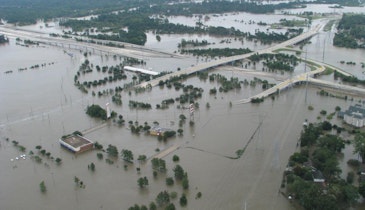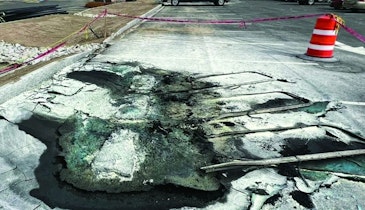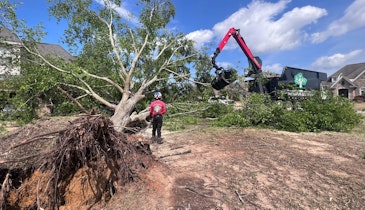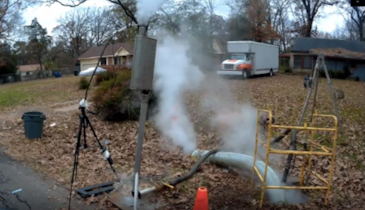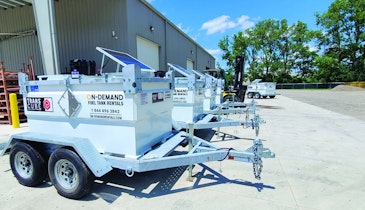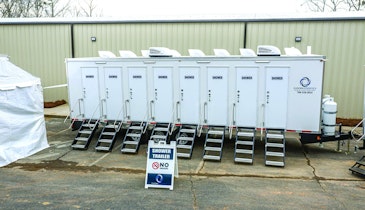Interested in Safety?
Get Safety articles, news and videos right in your inbox! Sign up now.
Safety + Get AlertsAbout 20 years ago, the Occupational Safety and Health Administration recognized that its Outreach Training Program should be expanded to include cleanup services and recovery work conducted by skilled workers in response to natural or human-made disasters.
“Demolition, heavy equipment operators, utility workers and skilled support personnel are needed in the event of a hurricane, earthquake, flood or other disastrous event,” says James Brock, director, division of training programs and administration, office of training and education at OSHA. “Their work is different than general industry work, and they encounter specific hazards.
“There was a recognition by OSHA and others that these resilient workers encounter hazards that weren’t being addressed elsewhere in the outreach program, and they needed to provide that training,” he adds.
Congress created OSHA through the Occupational Safety and Health Act of 1970. As part of the Department of Labor, OSHA’s mission is to “ensure safe and healthful working conditions for workers by setting and enforcing standards and by providing training, outreach, education and assistance.”
While OSHA has operated a training program since 1971, it has focused on promoting workplace health and safety and educating workers about hazards in the workplace. OSHA also requires employers to provide further training on their specific industry and jobs and oversees implementation of safety standards.
The Disaster Site Worker Program is another level of training within the outreach program. To become a trainer in the DSWP, individuals must have prior authorization in general industry or construction and attend additional classes at the OSHA Training Institute where federal and state compliance personnel are trained.
“The DSWP partners in these education programs with nonprofits and authorizes them to deliver OSHA training on their behalf,” says Brock. The 26 OTI centers are located around the country, generally at colleges and universities, labor unions and safety councils, training about 60,000 people annually.
“Currently, there are about 40,000 outreach trainers; about 1.2 million individuals have been through the program in all, with the bulk of them in construction. Disaster site training is a small percentage of that total.” Fewer than 2,000 have been through the program since 2016.
One of the OTI centers is located at Rutgers University School of Public Health in New Jersey. The center manager is Koshy Koshy, Ph.D., associate professor in the Department of Environmental and Occupational Health & Justice, Center for Public Health Workforce Development.
“OSHA’s Disaster Site Training started in 2005 and was developed to assist second responders tasked with cleanup after major disasters (natural or manmade),” he explains. “The related outreach trainer course, OSHA 5600: Disaster Site Trainer was developed shortly after Hurricane Katrina. A wide group of trainers attend the trainer course. They must have the 40-hour Hazardous Waste Operations and the OSHA Construction or General Industry Trainer course as a prerequisite to attending OSHA 5600.”
To successfully complete the disaster-site worker training, workers must complete either a 7.5-hour program or one that takes 15 hours; the difference depends on the specific industry the worker belongs to. The trainee must have previously completed either a 10- or 30-hour class in either general industry or construction.
“This is an addendum to the regular outreach course,” says Brock. “Some of the hazards encountered will be the same; this training deals with specificities unique to disaster sites.”
Courses are offered in the fields of construction, general industry and maritime, the oil and gas industry, healthcare and small businesses. Information on OTI Education Center locations, course descriptions and a searchable course schedule can be found on the OSHA website.
OSHA also offers more than a dozen fact sheets on its website, advising cleanup and recovery workers on hazardous spill cleanups, how to decontaminate an area or themselves, ways to mitigate dangers of electrocution when working around downed electrical wires, approaches to flood or oil spill cleanup, and even health and safety recommendations for those working with human remains.
OSHA training courses are not offered online. “These courses provide real hands-on activities that the instructor needs to closely supervise, monitor and evaluate, including inspection of air-cleaning respirators — and ensuring workers know how to properly put them on and take them off, for example” says Brock. “Instructors also teach traumatic stress awareness, an exercise where simulated disaster sites are established and students must identify the type of protection needed and come up with solutions, for example."
